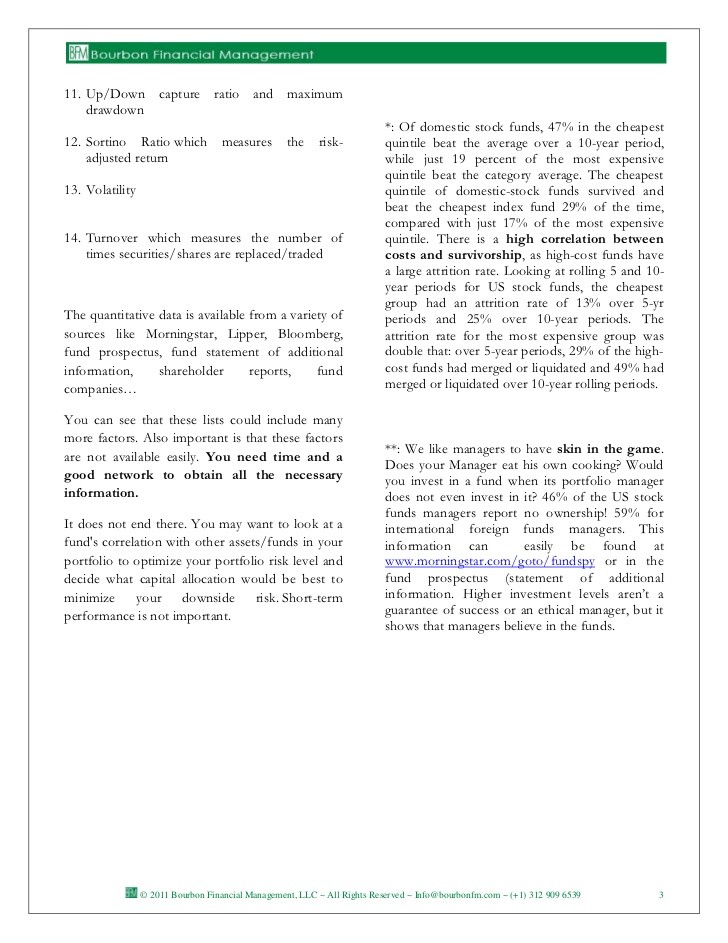ETFs and Risk Measurement Sharpe Treynor and Sortino Ratios For Dummies
Post on: 8 Май, 2015 No Comment

The Sharpe, Treynor, and Sortino ratios are measures of what you get for the risk in any given ETF investment or any other type of investment, for that matter.
Back in 1966, a goateed Stanford professor named Bill Sharpe developed a formula that has since become as common in investment-speak as RBIs are in baseball-speak. The formula looks like this:
The risk-free rate of return generally refers to the return you could get on a short-term U.S. Treasury bill. If you subtract that from the total portfolio return, it tells you how much your portfolio earned above the rate you could have achieved without risking your principal.
You take that number and divide it by the standard deviation. And what that result gives you is the Sharpe ratio, which essentially indicates how much money has been made in relation to how much risk was taken to make that money.
Suppose Portfolio A, under manager Bubba Bucks, returned 7 percent last year, and during that year Treasury bills were paying 5 percent. Portfolio A also had a standard deviation of 8 percent. Okay, applying the formula,
That result wasnt good enough for Bubbas manager, so he fired Bubba and hired Donny Dollar. Donny takes the portfolio and dumps all its high-cost active mutual funds. In their place, he buys ETFs. In his first year managing the portfolio, Donny achieves a total return of 10 percent with a standard deviation of 7.5. But the interest rate on Treasury bills has gone up to 7 percent. Applying the formula,
The higher the Sharpe measure, the better. Donny Dollar did his job much better than Bubba Bucks.
The Treynor approach was first used by you guessed it a guy named Jack Treynor in 1965. Instead of using standard deviation in the denominator, it uses beta. The Treynor measure shows the amount of money that a portfolio is making in relation to the risk it carries relative to the market. To put that another way, the Treynor measure uses only systemic risk, or beta, while the Sharpe ratio uses total risk.
Suppose that Donny Dollars portfolio, with its 10 percent return, had a beta of 0.9. In that case, the Treynor measure would be
Is 0.033 good? That depends. Its a relative number. Suppose that the market, as measured by the S&P 500, also returned 10 percent that same year. It may seem like Donny isnt a very good manager. But when you apply the Treynor measure (recalling that the beta for the market is always 1.0),
we get a lower number. That result indicates that while Donny earned a return that was similar to the markets, he took on less risk. Put another way, he achieved greater returns per unit of risk. Donnys boss will likely keep him.
Another variation on the Sharpe ratio is the Sortino ratio, which basically uses the same formula:
Note that instead of looking at historical ups and downs, it focuses only on the downs. After all, say members of the Sortino-ratio fan club, you dont lose sleep fretting about your portfolio rising in value. You want to know what your downside risk is. The Sortino-ratio fan club has been growing in size, but as yet, it is difficult to find Sortino-ratio calculations for any given security, including ETFs.
- Add a Comment Print Share














